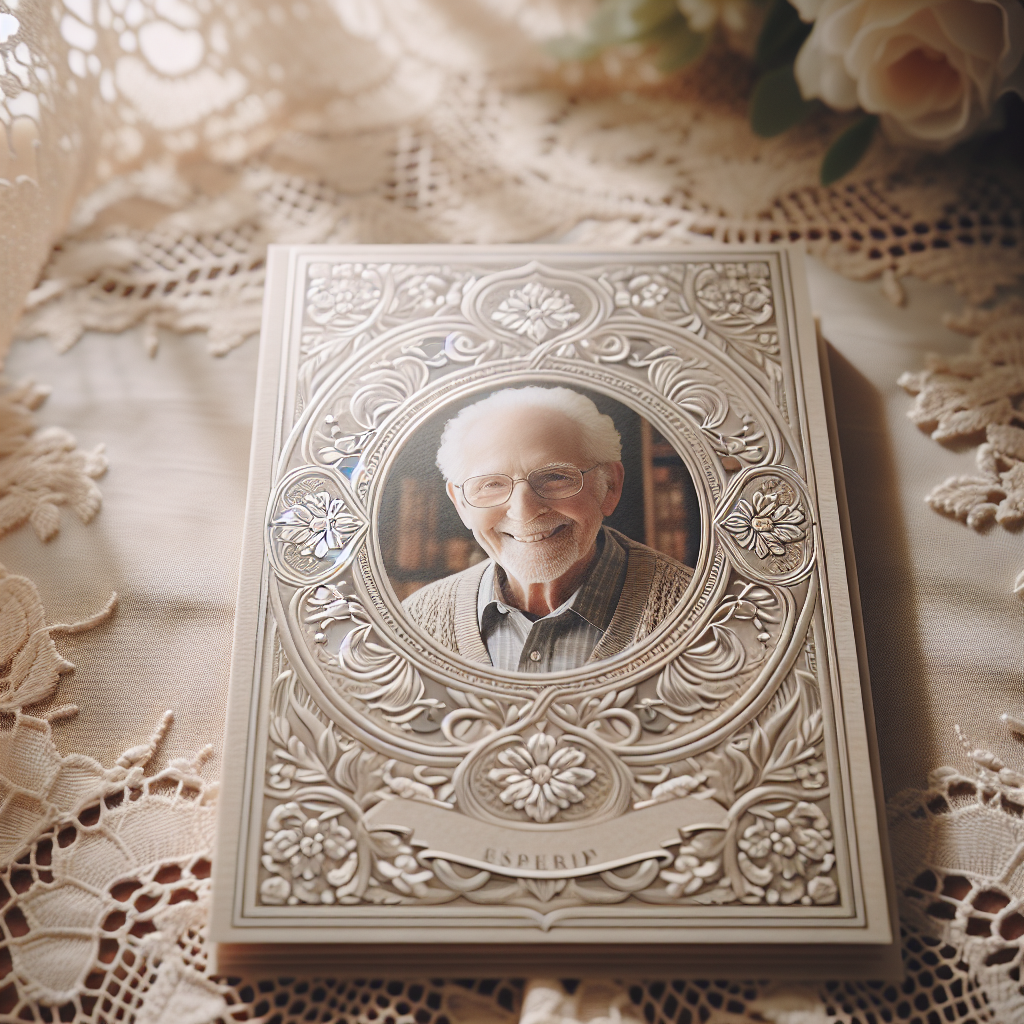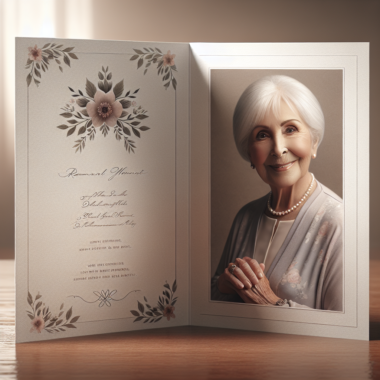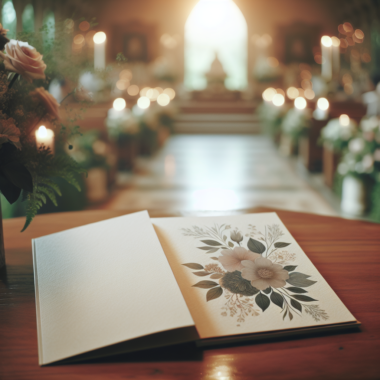When pondering “what is a memorial card”, it becomes essential to delve into its core purpose. Memorial cards serve as a tangible tribute to a loved one who has passed away, offering a personal keepsake that commemorates their life. These cards are often distributed during funeral or memorial services, ensuring that attendees have a lasting memento to cherish and remember the deceased by.
The primary objective of a memorial card is to encapsulate the essence of the departed individual. They typically feature a photograph, a brief biography, and poignant details such as the date of birth and passing. Additionally, a meaningful quote, poem, or prayer is often included to reflect the spiritual beliefs or personal sentiments of the deceased. This blend of elements not only honors their memory but also provides comfort to grieving friends and family.
Moreover, memorial cards facilitate a deeper connection between the attendees and the person being remembered, allowing for shared memories and stories. They can be personalized to include unique elements that resonate with the individual’s personality, hobbies, or achievements, making them even more special and significant.
Understanding the purpose of memorial cards is crucial in appreciating their role in a memorial service. By capturing the spirit of a loved one, these cards serve as a heartfelt reminder of their impact on the lives they touched.
Honor your loved one’s memory with thoughtfully designed memorial cards. Order funeral & memorial prints today.
Key Elements of a Memorial Card
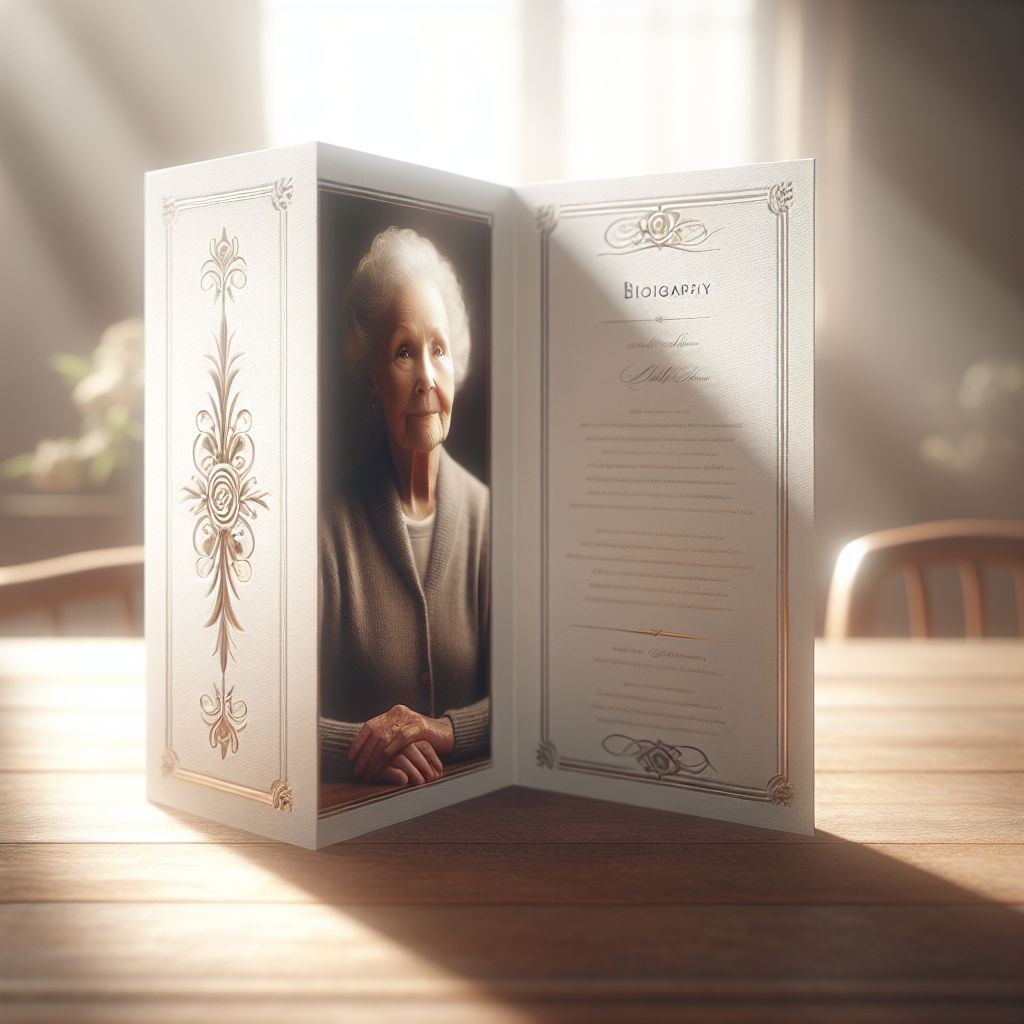
When considering the design of a memorial card, certain key elements are integral to creating a meaningful and respectful tribute. These elements are carefully chosen to ensure that the card truly reflects the life and legacy of the deceased.
**1. Photograph:** A central feature of any memorial card is a photograph of the departed. This image is often selected to capture the person’s essence, depicting them in a way that friends and family will find comforting and familiar. Choosing the right photo is crucial, as it serves as a visual anchor for the memories shared.
**2. Personal Information:** Typically, a memorial card includes important details such as the full name of the deceased, date of birth, and date of passing. These details not only identify the individual but also mark the journey of their life.
**3. Inspirational Quote or Prayer:** Including a favorite quote, poem, or prayer adds a layer of personalization to the card. It provides emotional solace and can reflect the values or beliefs of the deceased. This element often resonates deeply with those who share similar sentiments.
**4. Biography or Tribute:** A brief biography or tribute can be included to highlight significant life events, achievements, and cherished memories. This narrative can celebrate the individual’s contributions and the impact they had on those around them.
**5. Artwork and Design:** The aesthetic elements, such as colors, borders, and motifs, play a role in setting the tone of the memorial card. These design choices should align with the personality and preferences of the deceased, further personalizing the card.
Each of these elements contributes to the overall impact of the memorial card, making it a cherished keepsake that holds sentimental value for all who receive it.
Personalizing Your Memorial Card

Personalizing a memorial card is an opportunity to create a unique tribute that honors the individuality of the deceased. This process allows family and friends to inject personal touches that make the card a heartfelt reflection of the loved one’s life.
**1. Custom Wording:** The choice of words on a memorial card can be tailored to reflect the personality, values, and beliefs of the deceased. Families often opt for a personalized message, anecdote, or saying that holds special meaning.
**2. Unique Designs:** Beyond standard templates, families can select specific themes, colors, and designs that resonate with the deceased’s interests or hobbies. Whether it’s a favorite color palette or a motif that represents a passion, these elements can make the card truly special.
**3. Use of Symbols:** Incorporating symbols or icons that held significance for the deceased is another way to personalize the card. This might include religious symbols, emblems of clubs or organizations they belonged to, or motifs that signify a cherished pastime.
**4. Inclusion of Personal Photos:** Adding personal photos beyond the main portrait can enhance the card’s personal touch. These can be images from significant life events, family gatherings, or candid moments that capture the essence of the individual’s life journey.
**5. Handwritten Notes:** Including a handwritten note or signature from family members adds an intimate touch. This simple addition can convey love and remembrance in a deeply personal way, making the card even more treasured by recipients.
By focusing on these personalization options, families can ensure that their memorial card is not just a memento, but a cherished reflection of a life well-lived, providing comfort and connection to all who receive it.
Choosing the Right Design for Memorial Cards

Selecting the right design for a memorial card is a crucial step in creating a meaningful tribute. The design choice should reflect the essence of the person being commemorated, while also fitting the tone of the memorial service.
**1. Consider the Overall Theme:** Start by considering the overarching theme of the memorial. Is it a solemn affair or a celebration of life? The design of the card should align with this theme, ensuring it feels cohesive with the service.
**2. Color Palette:** Colors can evoke emotions and set the mood. Soft, muted tones may convey a sense of peace and remembrance, while vibrant colors might be more suited to a joyful celebration of life. Choose a palette that best represents the personality and spirit of the deceased.
**3. Image Selection:** The main image on the memorial card often serves as the focal point. A thoughtful choice is a photo that captures the individual’s character and essence. Additionally, consider using backgrounds or borders that complement the image without overwhelming it.
**4. Font and Typography:** The font style should be easy to read and appropriate for the tone of the message. Script fonts can add elegance, while simpler fonts may suit a more modern or understated card. It’s essential to ensure that the text is legible and complements the overall design.
**5. Layout and Format:** Decide on the format that best suits the information you wish to include. A folded card offers more space for additional text or images, whereas a single flat card might be ideal for a succinct message. The layout should facilitate an easy flow of information, guiding the reader through the card’s contents.
By carefully considering these design elements, you can create a memorial card that not only honors the deceased but also provides a lasting keepsake for all who cherish their memory.
How Memorial Cards Enhance Services

Memorial cards play a pivotal role in enhancing funeral and memorial services by providing a tangible keepsake that attendees can cherish long after the proceedings are over. These cards serve not only as a memento of the deceased but also as a comforting reminder of their life and legacy.
**Personal Connection:** Memorial cards help in creating a personal connection with the attendees. By incorporating meaningful images, quotes, or anecdotes, these cards reflect the personality and life story of the deceased, allowing mourners to reminisce and celebrate their loved one’s life.
**Guided Reflection:** During the service, memorial cards can offer solace and reflection. They often include significant texts such as poems, scriptures, or personal messages that resonate with the audience, encouraging introspection and providing comfort in times of grief.
**Keepsake Value:** As cherished keepsakes, memorial cards are often kept by attendees as a reminder of the individual and the service. They provide a lasting tribute that can be revisited, fostering ongoing remembrance and connection.
**Enhancing Atmosphere:** A well-designed memorial card can also enhance the overall atmosphere of the service. By aligning with the service’s theme, these cards contribute to a coherent and respectful tone, enriching the experience for all present.
The thoughtful inclusion of memorial cards in a service underscores the importance of honoring loved ones in a meaningful way. They act as a bridge between the past and present, helping mourners to process their grief while celebrating the life that was lived.
For those looking to create a powerful and lasting tribute, consider our Funeral & Memorial Printing Services to design and print memorial cards that truly capture the essence of your loved one. Order funeral & memorial prints today to ensure a memorable and heartfelt service.
 Free Shipping Over $50
Free Shipping Over $50  888-432-8363
888-432-8363


 Obituary/Programs
Obituary/Programs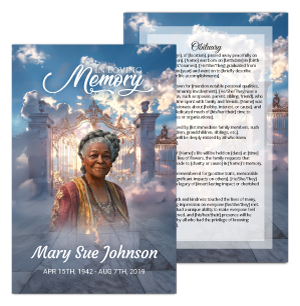 No-Fold Memorial Programs
No-Fold Memorial Programs 4 Page Funeral Programs
4 Page Funeral Programs 8 Page Memorial Programs
8 Page Memorial Programs 12 Page Funeral Programs
12 Page Funeral Programs 16 Page Funeral Programs
16 Page Funeral Programs 20 Page Funeral Programs
20 Page Funeral Programs Tri-Fold Funeral Programs
Tri-Fold Funeral Programs Complete Memorial Packages
Complete Memorial Packages
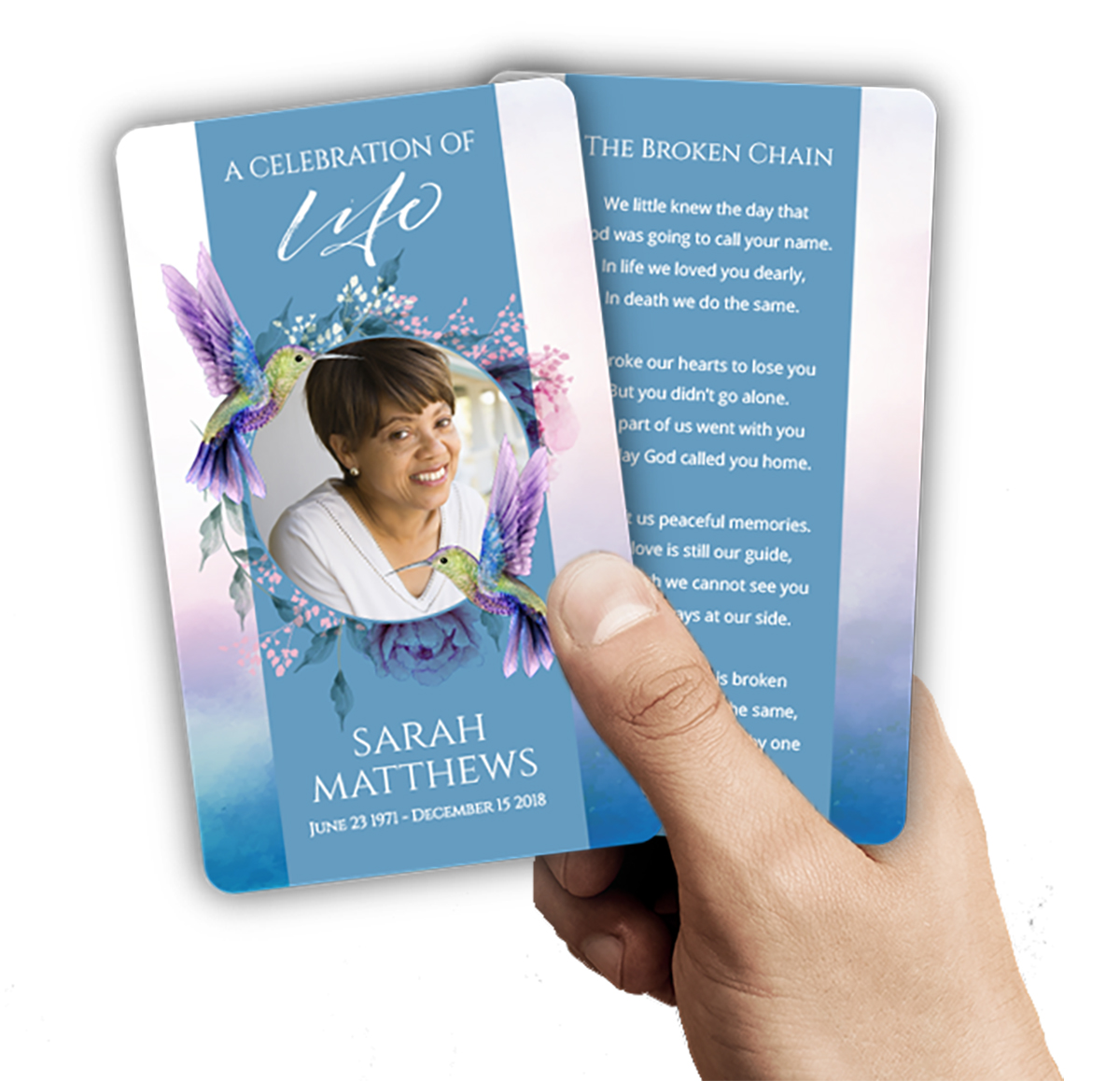 Cards & Bookmarks
Cards & Bookmarks Saint Prayer Cards
Saint Prayer Cards Folded Memorial Cards
Folded Memorial Cards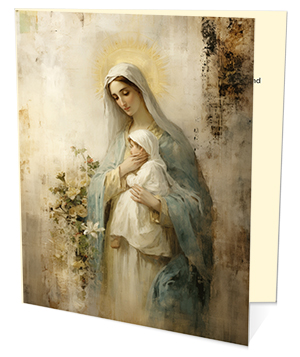 Folded Holy Cards
Folded Holy Cards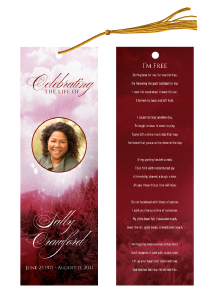 Memorial Bookmarks
Memorial Bookmarks Thank You Cards
Thank You Cards Share-A-Memory Cards
Share-A-Memory Cards Memorial Magnets
Memorial Magnets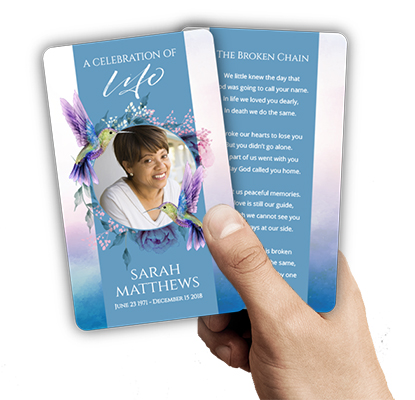
 Memorial Posters
Memorial Posters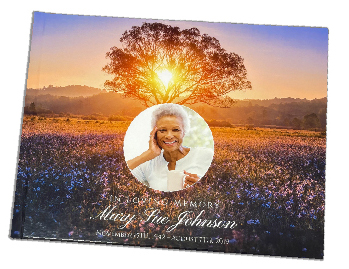 Guest Books
Guest Books Slide Shows
Slide Shows Memorial Fans
Memorial Fans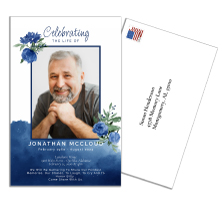 Death Announcements
Death Announcements Take Away Keepsakes
Take Away Keepsakes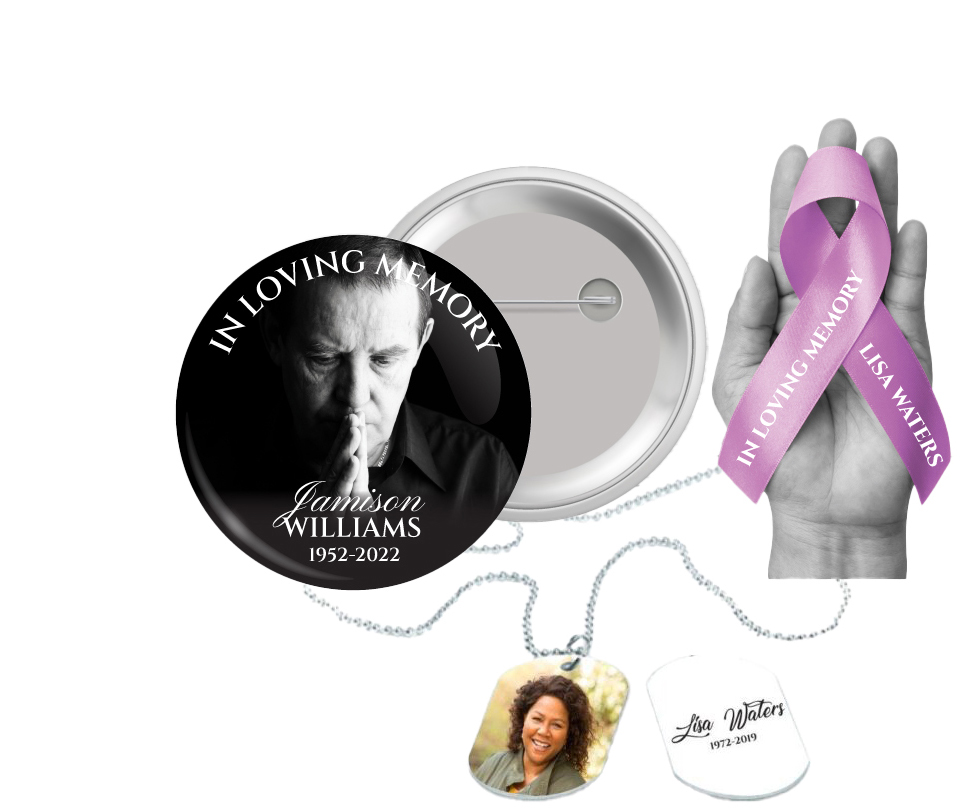
 Church Products
Church Products